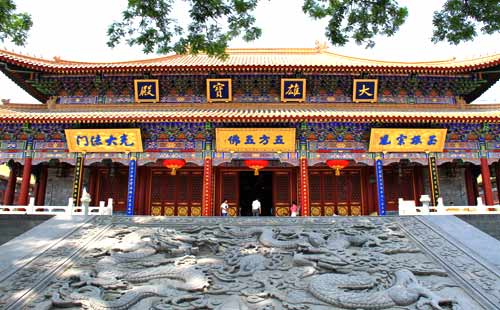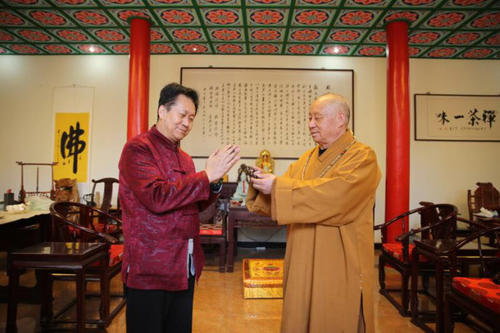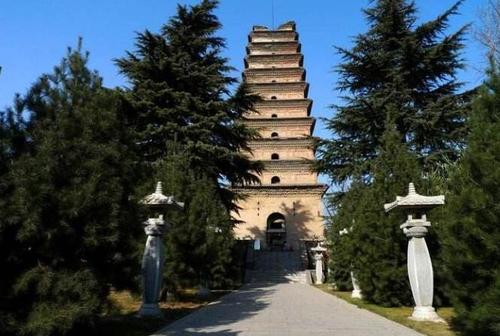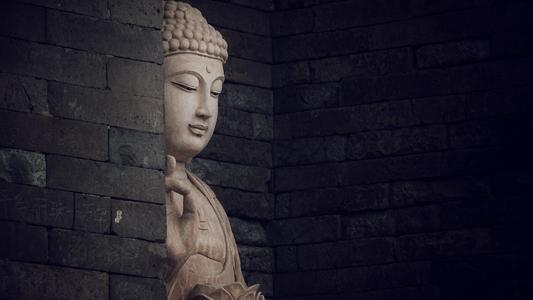Chinese Name: 香积寺 Pronunciation: Xiāng Jī Sì
Building Time: 681
Best Visiting Season: All seasons
Admission Ticket Fare: Free
Opening Time: 7:30-17:30
Recommended Time for Visit: 1-3 Hours
Occupied Area: 20,000 square meters
Address: Xiangjisi Village, Guodu Town, Chang’an District, Xi’an City, Shaanxi, China
Building Function: It was originally built in memory of Master Shandao, the founder of the Pure Land Buddhism of China.

Situated in Chang’an District, Xiangji Temple is about 17.5 kilometers away from the downtown of Xi’an. It is one of the Eight Grand Temples of Fanchuan (a famous Buddhist region in Xi’an during the Tang Dynasty) and the ancestral temple of the Pure Land Buddhism of China. Following the Buddhist architectural arrangements, the temple sits in the north and faces the south.
The name of the temple came from Vimalakirti Sutra, a Buddhist scripture. “Xiangji” literally means accumulated fragrance or merits. The temple was named “Xiangji” to commemorate the merits and contributions of Master Shandao, who was considered an incarnation of Amitabha Buddha.
Xiangji Temple used to be very famous in the Tang Dynasty (618-907). Emperor Gaozong, the third emperor of Tang, once visited the temple to pay respect for Buddha and granted more than one thousand Buddhist relics to the temple. Wang Wei, a famous poet at that time, composed a poem to speak highly of the beautiful scenery of Xiangji Temple.
For more than a thousand years, Xiangji Temple has gone through ups and downs. Today it is still of great value and attracts many visitors from China and beyond.

Xiangji Temple boasts a history of more than 1300 years. In 681, during the reign of Emperor Gaozong of the Tang Dynasty, Master Shandao passed away. To commemorate the master, Huaiyun, a disciple of Shandao, built Xiangji Temple and a pagoda. From then on, Xiangji Temple has been considered the cradle of the Chinese Pure Land Buddhism.
During the An Lushan (a general of Tang) Rebellion and the Great Anti-Buddhist Persecution in the Tang Dynasty, Xiangji Temple was seriously devastated. As a result, many cultural relics were damaged and lost. Fortunately, during the Song Dynasty (960-1279), Pure Land Buddhism became prevalent again and the temple was restored.
In 978, the temple was named “Kaili Temple” for a short time.
During the Jiajing period (1522-1566) of the Ming Dynasty (1368-1644), the temple underwent an extensive restoration.
After the founding of the People’s Republic of China in 1949, the temple was listed in the first batch of Key Cultural Relics Protection Units in Shaanxi Province, the National Key Chinese Buddhist Temples, and the National Key Cultural Relics Protection Units.
Dharma assemblies are held on traditional Chinese or Buddhist festivals such as the Spring Festival and Buddha’s Birthday. Meanwhile, on Laba Festival, a traditional Chinese festival celebrated on the eighth day of the twelfth month of the Chinese lunar calendar, the temple provides free Eight-treasure Porridge to the public.

Born in 613 during the Daye period (605-618) of the Sui Dynasty (581-618), Abbot Shandao was considered the real founder of Pure Land Buddhism in China. In 681, Abbot Shandao passed away at the age of 69.
During his life, he composed a plurality of Buddhism classical works. In the 8th century, his writings were introduced to Japan. Therefore, the Pure Land Buddhism in Japan was established, and then it developed and prevailed in Japan. Hence Xiangji Temple is considered to be the ancestral temple of the Pure Land Buddhism in Japan.
Abbot Xudong was the first abbot of Xiangji Temple since the founding of the People’s Republic of China in 1949. He passed away in 1999.
Born in 1967, Abbot Benchang is the current abbot of the temple.

The pagoda, built in 681, was named after Master Shandao and has boasted a history of more than 1300 years.
With 11 stories, the pagoda is 33 meters in height. Similar to the Small Wild Goose Pagoda in Xi’an, there is a crack extending from the top to the bottom of the pagoda.
Standing outside the courtyard of Xiangji Temple and about 200 meters away from Shandao Pagoda, the five-storied Jingye Pagoda, with a height of 14.7 meters, was built in 724, the 12th year of the Kaiyuan period (713-741) of the Tang Dynasty.
The pagoda is believed to commemorate Master Jingye, the disciple of Master Shandao.

Dhvaja used to refer to a flag or a valance for royal progress in ancient India. When Buddhism spread into China, silk with images of Buddha or scriptures was called Dhvaja. Later, during the Southern and Northern Dynasties (420-589), columns carved with Dharani were called Daharani Dhavja.
Now ten Daharani Dhvajas, which were all built in the Tang Dynasty, stand in Xiangji Temple. Besides, the scriptures carved on the Dahvja built in 754 can still be recognized.
There is a famous Buddhist saying in China: “He who puts down a butcher knife can become a Buddha instantly”, which is often used to persuade people to keep away from evil and be a good person. The saying is believed to originate from the story of Master Shandao.

When Master Shandao traveled in Chang’an, the capital of the Tang Dynasty, at the age of 23, he walked around the streets to persuade people to be a vegetarian and believe in Buddhism.
Gradually, people in Chang’an refused to eat meat. As a result, a butcher whose livelihood was greatly affected, became mad at Master Shandao and rushed to the temple to look for the master with a knife in his hand.
However, as soon as he saw the master who looked holy and kind, he was greatly touched and felt ashamed, so that the knife in his hand dropped on the ground. The butcher knelt, putting his palms together devoutly, and confessed to Master Shandao.
Master Shandao persuaded him to believe in Buddhism. The butcher was enlightened by the master. Then he climbed on a tree near the temple, chanting Buddhist scriptures, and converted to Buddhism.
Main Gate →Daharani Dhavja →Hall of Heavenly Kings→Drum Tower →Bell Tower →Hall of Sangharama →Shandao Pagoda →Main Shrine Hall →Dhammasala (the hall for sutra lectures) →Jingye Pagoda
As Xiangji Temple is a holy and solemn place for Buddhists, visitors should avoid wearing shorts, short skirts, or slippers. Meanwhile, taking photos inside the temple is prohibited. Visitors should also avoid going to any place that is not open to the public.
Take bus 738 and get off at Xiangjisi Jingqu Station.
Take bus 320, 325, 334 or Tourist Bus Line 9 and get off at Xiangjisi Cun Station.
Chinese: 请带我去香积寺。English: Please take me to Xiangji Temple.
If you go to Xiangji Temple from the center of Xi’an (Grand Noble Hotel Xi’an), it takes about 65 minutes (about CNY 60).
If you go to Xiangji Temple from Xi’an Xianyang International Airport, it takes about 60 minutes (about CNY 150).
If you go to Xiangji Temple from Xi’an North Railway Station, it takes about 1 hour (about CNY 100).
If you go to Xiangji Temple from Xi’an Railway Station, it takes about 60 minutes (about CNY 65).
